If you’re motivated to grow your online presence, it’s time to get to work on your SEO (search engine optimization).
You’ve probably known this for a while. Perhaps you’ve even worked on it a few times now and then. But SEO is about consistency. Keep doing it, make it part of your routine, and over time it can increase organic search engine traffic to your website and produce great results without having to pay for online ads.
So what exactly should you be working on?
New blog posts? Updates to existing articles? Images? Headings? Getting that little green circle in Yoast? And what about broken links? Do they matter? How do you even find them?
What you need is an SEO checklist — a set of steps and strategies you can use to put more direction and specificity in your calendar for the hours you’ve set aside to “do SEO.”
This SEO checklist covers what you need to be doing to have robust search engine optimization. Some of it you only have to do once, or check up on once or twice a year. Other items are ongoing — things you should do consistently for the most effective, traffic-generating content on your website.
So let’s get to it. Here’s the ultimate SEO checklist for ecommerce stores, online businesses, blogs, and any other websites that want to draw more organic traffic.
We’ve broken this down into four categories so you can find the items you need to address first:
- Essentials, for websites who have done little with their SEO
- Product pages, specifics for ecommerce websites
- Advanced tips, for websites who have the basics down but want even more traffic and conversions
- Local SEO tips, for stores who focus on a local audience
The SEO checklist essentials — what to do first
Whether you just launched your new website or have been at this for a while but neglected this area of your marketing, use the first group of tasks on our SEO checklist to start boosting your organic traffic.
1. Have a running list of keywords and keyphrases
SEO begins with keywords.
People who search Google and other engines to find answers can only be pointed to websites that relate to the keywords they type into the search bar. If your site doesn’t have content around the keywords your ideal customers and leads are likely to type, they can’t find your website through search.
Engines work to match the search intent with the right web page that best fulfills the need.
This is the point of keyword research — to find which target keywords your target audience is using so you can create content that addresses the need behind the search.
The best keyword strategy is to assign a different keyword to each page of your website, and optimize that page using some of the other tips on this SEO checklist. If more than one page tries to optimize for the same keyword, search engines like Bing and Google won’t know which page to send people to who search for that term.
Take a look at your existing pages, and see if you’re emphasizing some of your most common keywords on multiple pages. If so, that’s something you should address as part of this first step.
What if you have more keywords than pages?
You probably will, and this is a good problem. Having a surplus of keywords makes it easier to write content for new pages (this also means blog posts or articles), because you can just look at your list of unused keywords and choose one to focus on for your next web page.
If you’re just getting started, pick the keywords you want to optimize for the next 12 months as you develop your content calendar, and leave the rest aside for later.
Where do you find keywords?
There are a number of places to begin when compiling a list of keywords, especially if you have a Google Ads account and can access Google keyword planner. But even without that, here are ways to start:
Use your own creativity
You already know a lot about your website, products, services, and content. You also know something about the people who visit your website. Don’t underestimate the power of some brainstorming. You can probably generate a sizable starting list of keywords. What are people likely to search for that relates to your website?
Here’s the most important thing — brainstorm first. Even if you only think of five terms (you’ll probably have a lot more than that), you’ll be able to use those terms as a base to generate many more using the rest of these keyword research strategies.
Look at autofill answers
Have you ever noticed how when you type something into a search engine, it “guesses” the term you might be thinking about? This autofill feature isn’t just some randomly generated list of terms. Those autofill suggestions are based on what other people have searched for. If you see a term in the autofill, that means enough people have searched for that term that Google considers it a possibility for what you want to search for as well.
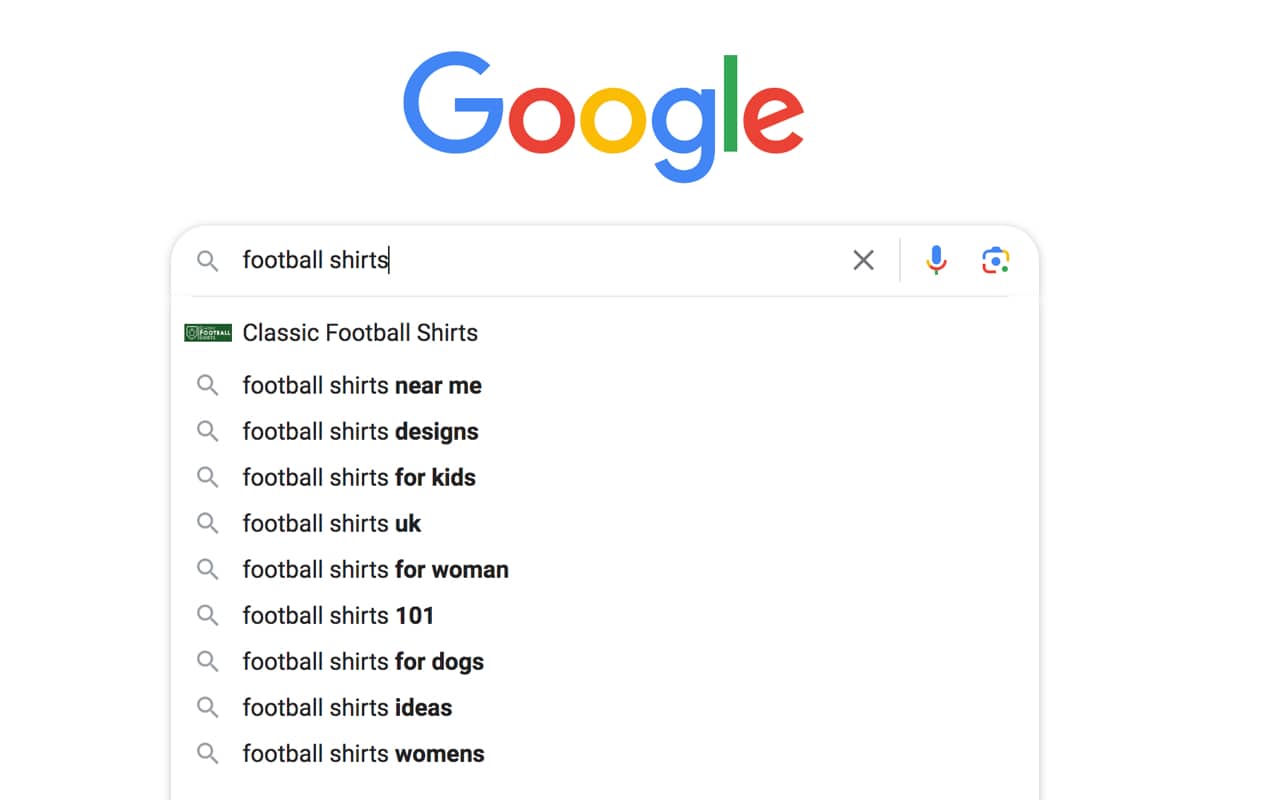
So, take your initial list of keywords, and type them into a search engine. See what other terms show up in the autofill and write them down. This will probably lead to dozens of valid keywords, and you can do this in about five minutes.
Note related search terms
Next, when you actually search for a term and the results show up, if you scroll down the search results page, you’ll often come to a section of ‘related search terms.’ Like autofill, these are terms other people have searched for that relate in some way to the term you just used. Pick a few of these that are distinct from your other keywords and relevant to your website, and add them to your list.
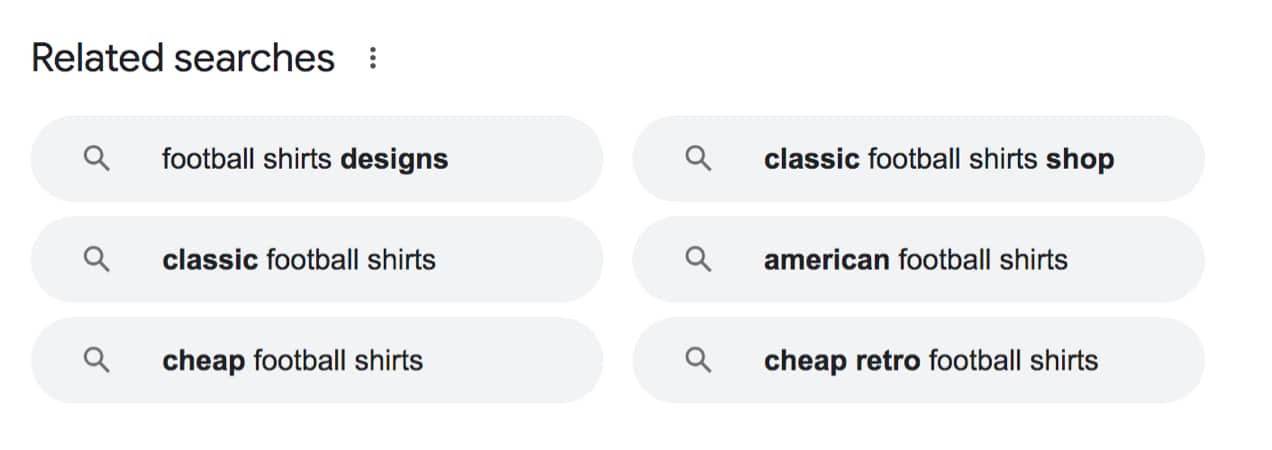
If you stop right here, you should already have dozens, if not hundreds, of keywords to work with for your SEO checklist. This type of keyword research is free, and it takes very little time. Keep going, and you’ll find even more high-quality terms, including valuable long tail keywords — more on that in a second.
Consider your product names and categories
If you have an ecommerce website, your product names can also be search terms. If these brand names and product names are well-known and people look them up by name, you want your site to show up for these people. For example, “building toys” is a product category. There are magnetic tiles, wooden blocks, brick toys, and more.
However, some people might search specifically for “Magna-Tiles roads.” This is a much more specific term with a high level of buyer intent (the searcher is likely to make a purchase soon). You’d definitely want to show up for this kind of search if you sell Magna-Tiles.
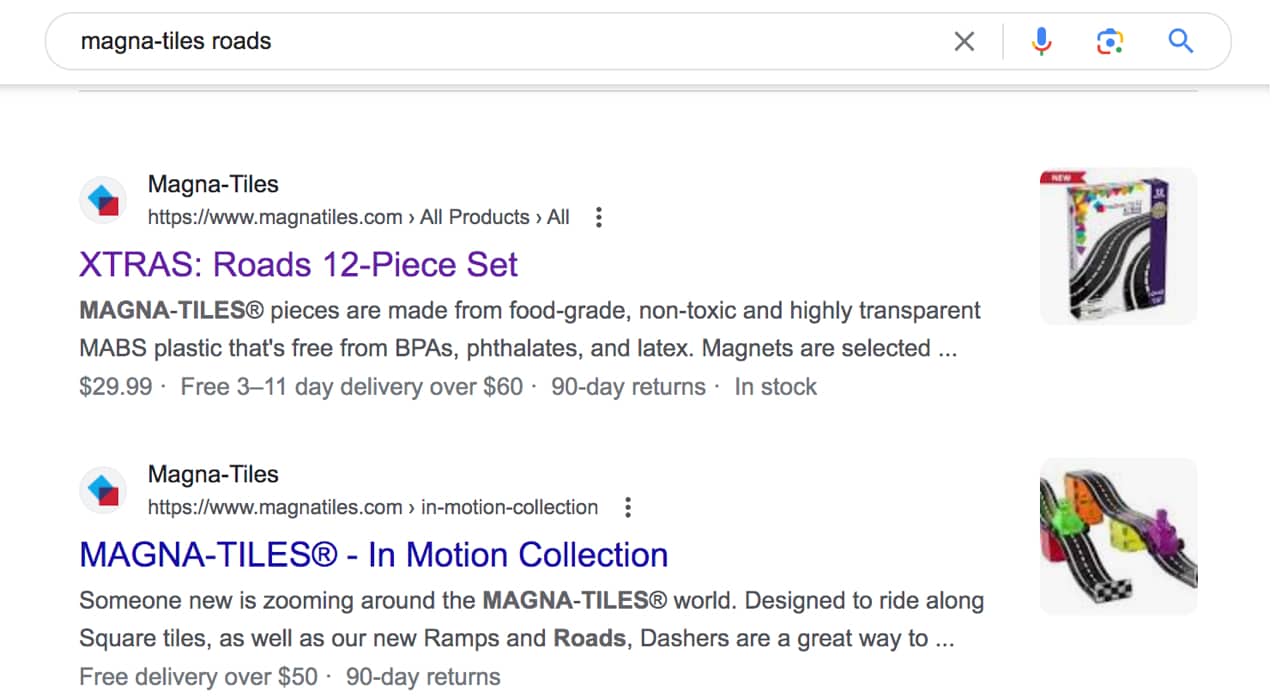
For SEO purposes, every single iteration of the brand names and products you sell can be its own keyword with its own page on your website.
Use terms related to your products and the problems they solve
After doing the steps above, revisit the brainstorming technique. What problems do your products solve? What questions do they answer? What might a person type in a search engine if they have a question your website should answer?
These more complex search queries are called long tail keywords. The traffic from these kinds of keywords will be lower in volume, but highly targeted in nature. These keywords work especially well as topics for blog posts, because each blog post can address a very specific problem or issue.
For example, it would be incredibly difficult for any website to rank for “paint”. Paint is too broad. More specific terms like house paint, exterior paint, deck paint, and interior paint are also very broad. You should still use those terms if your website is about painting, because that’s your industry. But every other paint supplier and service provider will be using them, too.
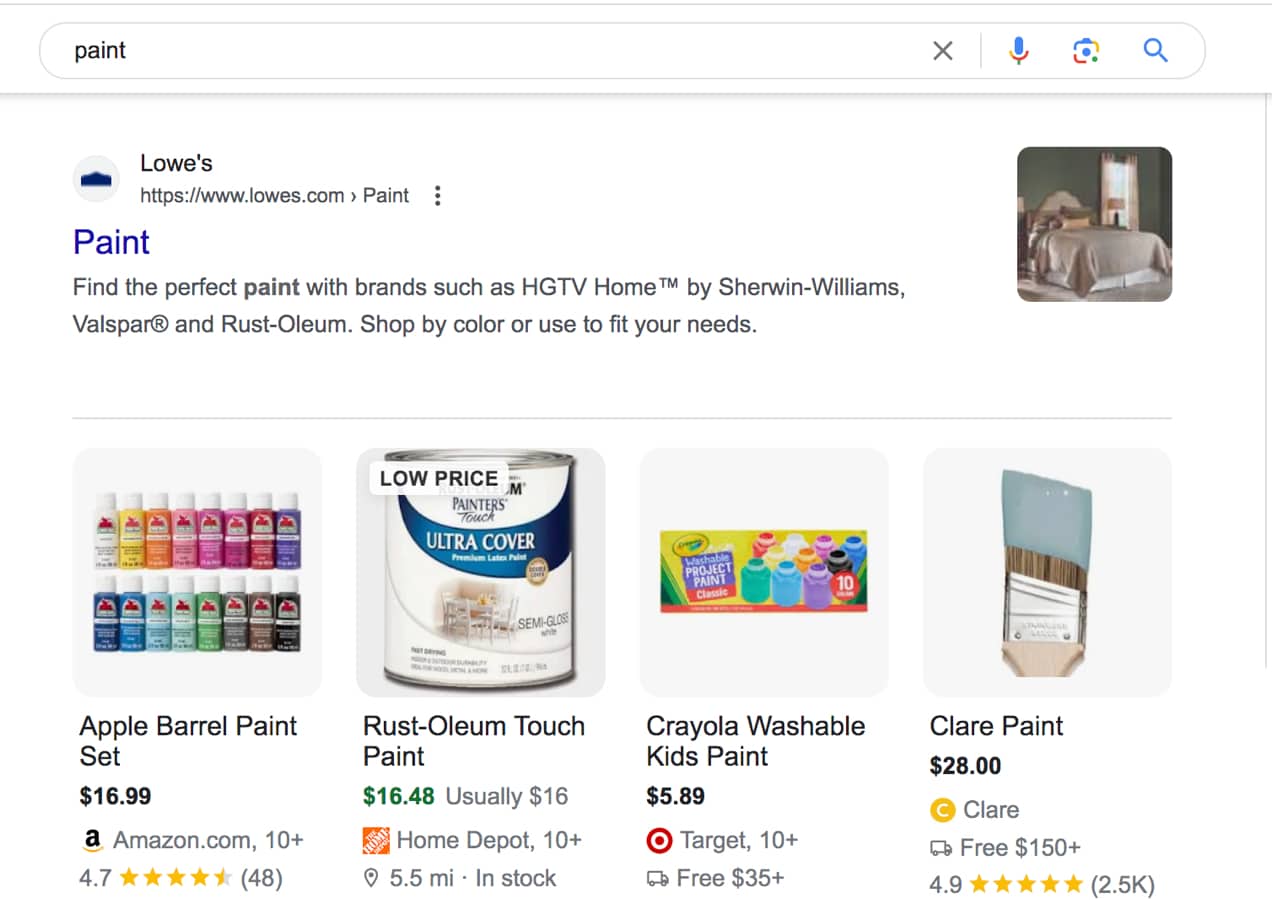
But what if you wrote a blog post using this keyword: “Exterior paint that doesn’t fade in high sunshine.”
This is a problem people deal with when choosing paints to buy. So, if your blog post had a title like “How to find exterior paints that don’t fade in the summer sun,” or “Top 15 non-fading exterior paints,” you’re now going to be attracting people who are looking to solve a very specific problem.
Very few paint suppliers and service providers are writing blog posts like this. And of those that are, most of them will not be in your local area. You may be the only one within proximity to a sizable number of people searching for terms like this. So when they find your site, they are more likely to buy from you.
Pay for SEO tools
As your website advances and you broaden your content strategy, it’s worth paying for some SEO tools such as SEMrush, Moz, and Ahrefs.
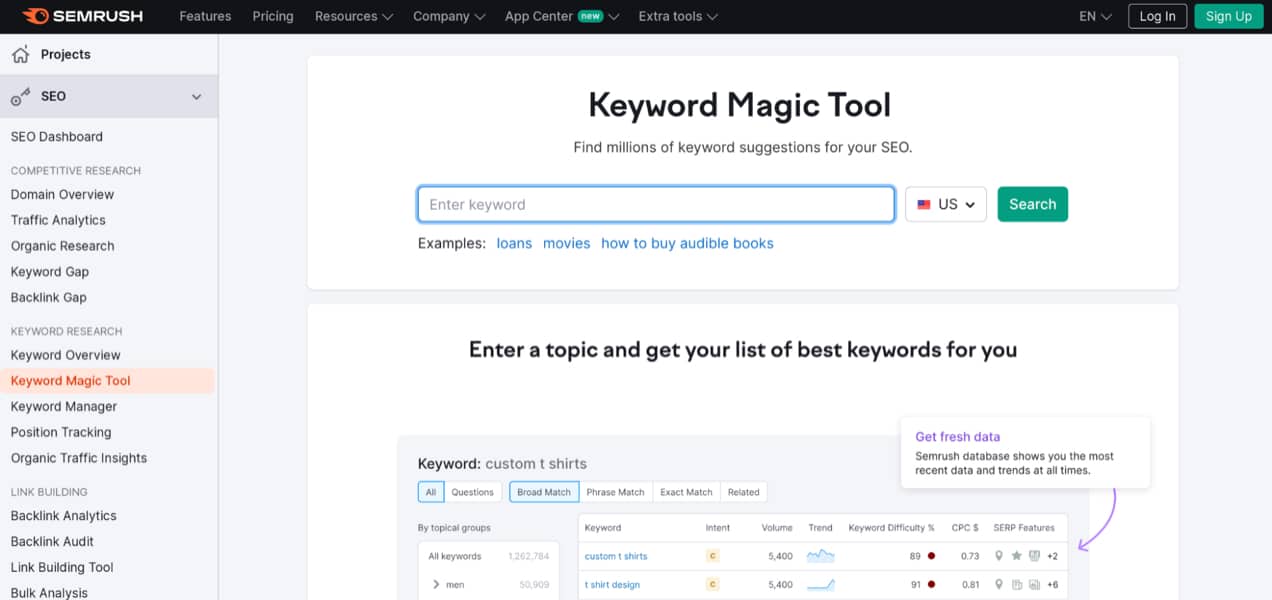
All of these have great keyword research tools. You’ll not only get new ideas alongside metrics about their potential traffic volume and the difficulty of ranking for each, you’ll also see examples of terms used by competitors and other websites getting traffic from keywords relevant to your website.
Use free SEO tools
If you’re on a tight budget, there are a few free online services that can still help you grow.
We’ve already mentioned Google keyword planner as a strong option if you have a Google Ads account (there’s no spending requirement to access it), but it’s not the only tool in town.
Keyword.io is another option to find long tail keywords.
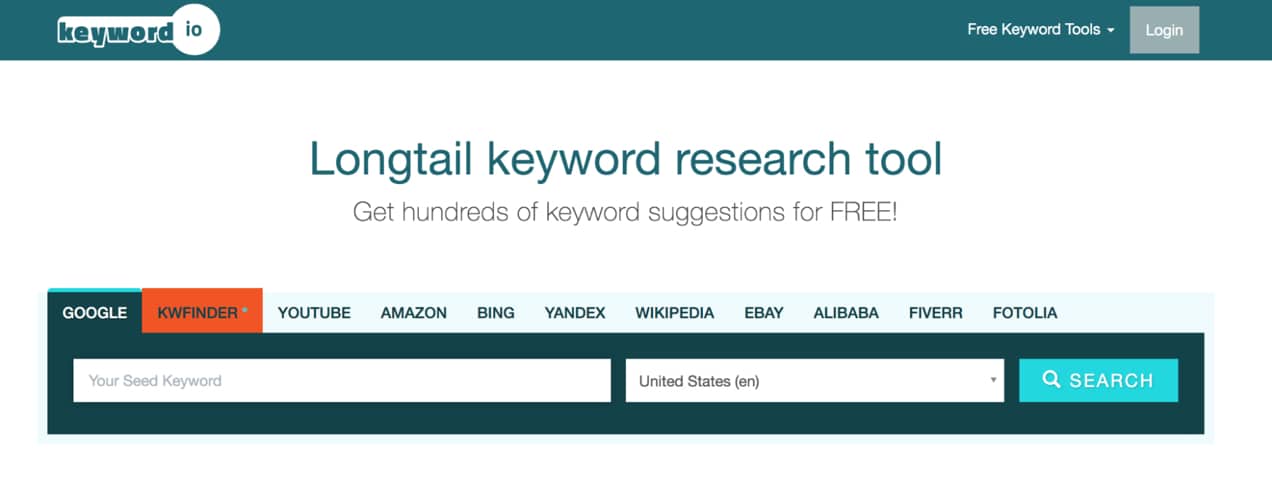
2. Set up Google Search Console
This SEO tool is less well known than other tools like Google Analytics, but in terms of SEO, it is far more valuable.
First, Google Search Console enables you to see how visitors are finding your site and how much traffic you’re getting to each of your pages. With this information, you’ll be able to see which pages aren’t performing as well as you would like. Then, you can focus on improving the SEO for those pages.
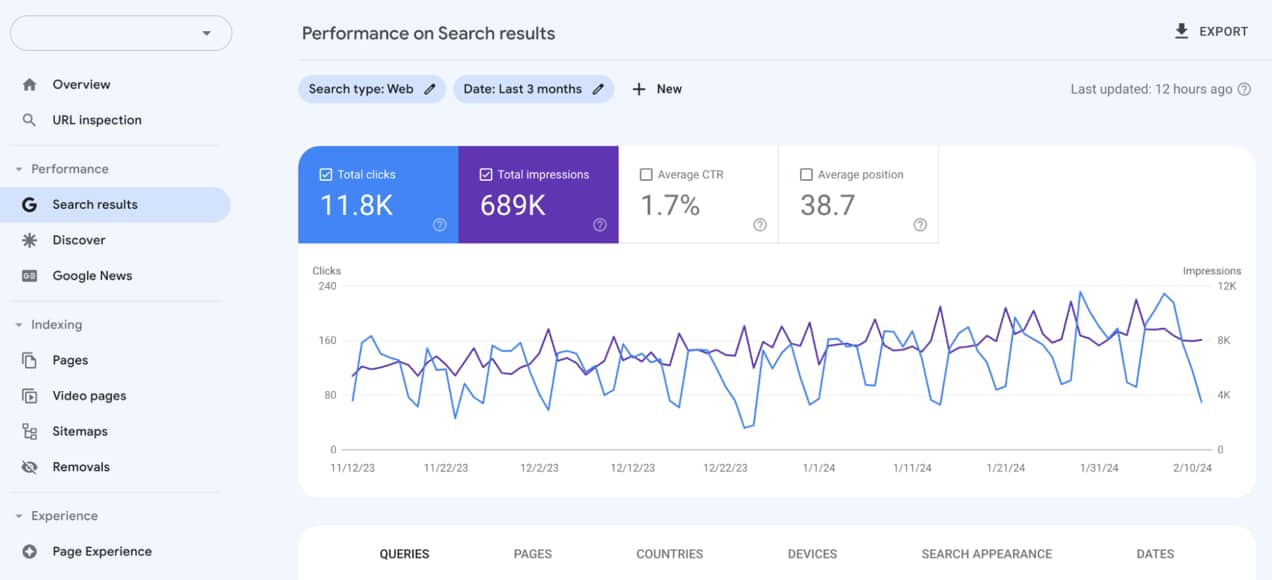
You can also see your keyword rankings compared to other sites and your average position in Google search results. This is helpful because you’ll know how far away your pages are from generating some serious traffic.
Google Search Console will also help you stay alert about certain technical SEO issues that can cause trouble for pages — things you would never know just by looking at your content.
For example, if your pages are having problems on mobile devices, Search Console will tell you. If your pages aren’t properly indexed for Google’s search engine crawlers, this will have a huge impact on your ability to draw traffic. And certain security issues and various page experience problems, including your Core Web Vitals, also get identified in Search Console.
With this tool, you’ll find out about any problems early and be able to fix them before they cause any long term problems.
You can also see data about backlinks, including those from within your site and external sites linking to your pages. You can even see the anchor text other sites are using to link to your website.
Google Search Console is a powerful SEO tool. It takes a bit of work to figure out how to use it, but the payoff is worth it for websites that really want to soar in the rankings. Here’s how to set up a Google Search Console account.
While we’re on the topic, taking the time to set up Google Analytics is also useful, but not as much for SEO. It tells you which pages are leading people to your site, and you can use it to track conversions so you know which of your pages are most effective.
This aspect does help your SEO, because it tells you which pages to focus on most. If one page is converting 10% of its traffic, and another page is only converting 2%, then you’d want to optimize the SEO on the page converting higher, first. And this is exactly the sort of information you can find with a Google Analytics account.
Then, once that one is humming, work on the lower-converting page’s SEO (and seek to improve its conversion rate while you’re at it). You can set up a Google Analytics account from within your Google account.
3. Set up Bing Webmaster Tools
Bing Webmaster Tools is Bing’s version of Search Console. In fact, Search Console used to be called Google Webmaster Tools. Bing’s service performs most of the same functions, but for their search engine. Having one is good, but having both is better, because it means your site will be optimized to perform well regardless of which search engine someone is using when they search for keywords that are relevant to your pages.
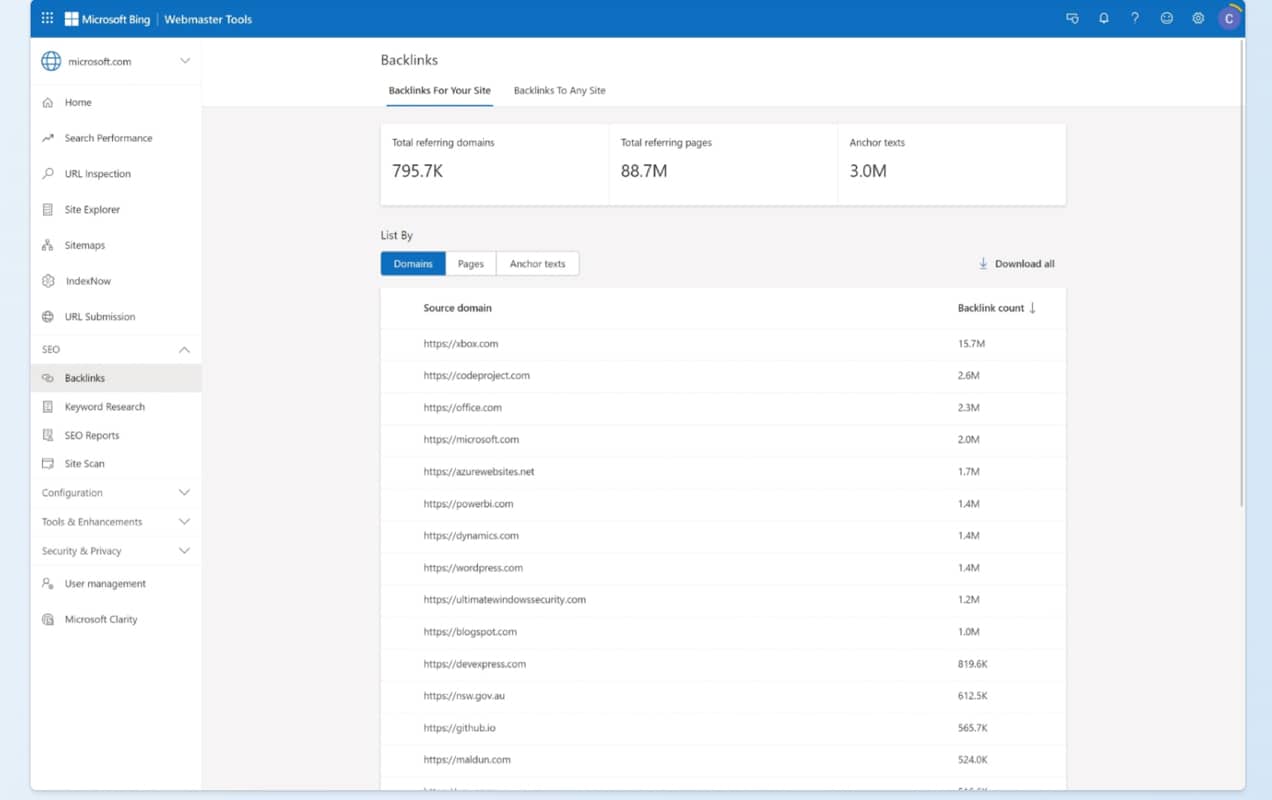
4. Submit an XML sitemap
A sitemap is a special document that Google uses to crawl your website and understand its structure and how to find your pages. Here’s some great info about how to create a sitemap.
When Google can more easily find your pages and understand your website, your pages have a better shot at being listed in search results.
This is also another reason to set up Google Search Console. Because once you’ve created your sitemap, you can submit it directly to the search engine.

5. Install an SSL certificate
An SSL certificate encrypts the data sent from visitors and customers through your website, including personal information sent through forms and Checkout pages. This is an absolute essential from a security perspective, and Google penalizes websites without them when determining search results.
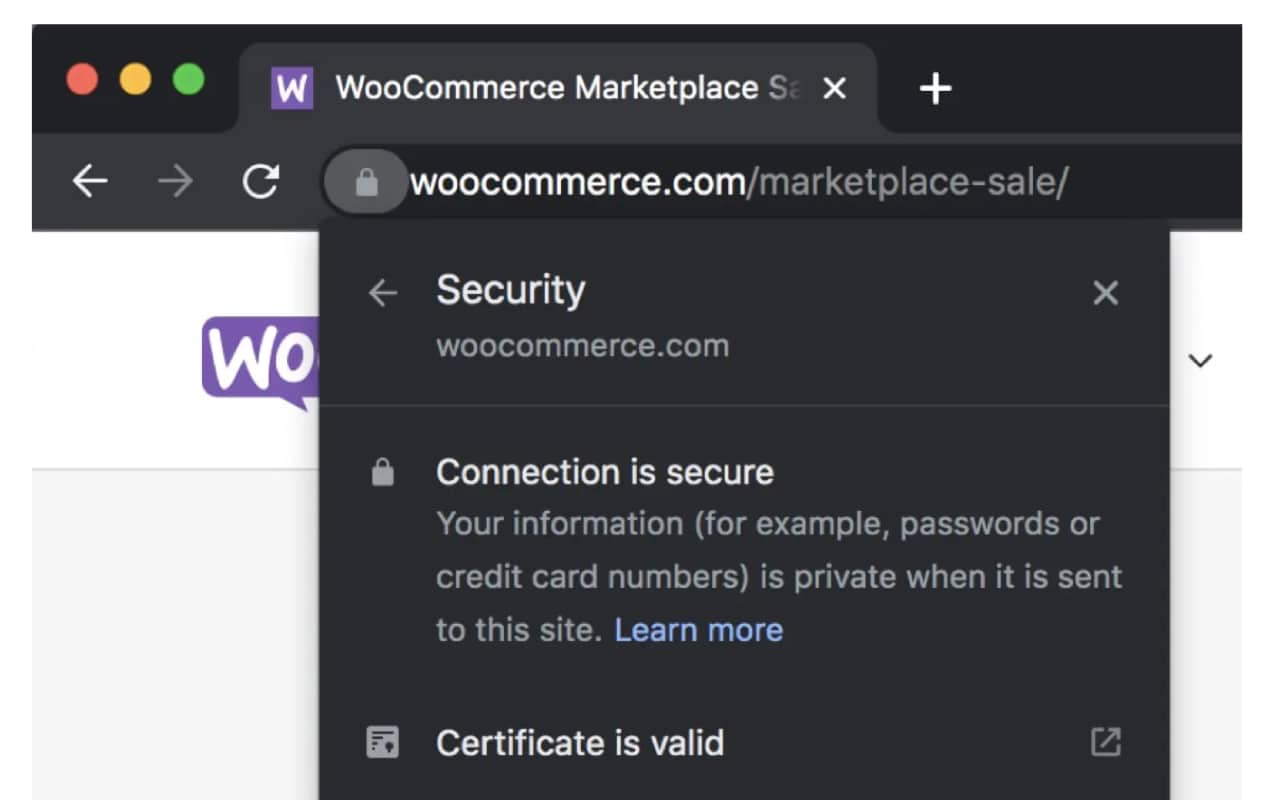
The good news is, this is a relatively simple one-time fix. Here’s more about SSL certificates for ecommerce sites. This should be a fairly quick task to complete your SEO checklist, but it will have huge results.
6. Create a per-page SEO process
Every time you add a new page of content such as a blog post, there are certain things you want to do from an SEO perspective. You should write all that out in a clear step-by-step procedure. Then, you or whoever you want to train to do it, will have a process to follow.
Here are a few things to include in your per-page SEO process:
- Choose a target keyword.
- Feature the chosen keyword or a close variant in your on-page H1.
- Include that keyword, exactly, in your URL.
- Sprinkle that keyword throughout your content, but not so much that it degrades the reading experience.
- Include that keyword in at least one image alt text (while still using alt text for its intended purpose).
- Find a natural, relevant place on another page of your site to include a link, using the keyword as the anchor text, to the page you’re optimizing.
- Include a version of that keyword in your title tags and meta descriptions.
- Include a version of that keyword in at least one H2.
You may include additional steps to your process, particularly if you’re using an SEO tool like the ones mentioned earlier. But this is a good set of tasks so you have a procedure to follow.
If you’re not sure what some of the terms listed in these bullet points are referring to, we will explain them in much more detail in the section below about product page SEO. Even if you aren’t selling products, the meaning of the terms being used is the same. So, if you aren’t selling products, you’ll still find good information in the next section.
Product page SEO checklist for ecommerce sites
For ecommerce stores and any other website that sells products, you’ll want to pay extra attention to a few aspects of your SEO. This kind of piggybacks on the per-page SEO process we just discussed, but is specific to product pages.
On product pages, your primary keyword is usually going to be either the name or category of the product. It could include your brand name, but in many cases it’s not necessary, especially if your brand isn’t particularly well-known. Your goal is to get traffic, and then use your product pages to make the sale.
Here’s our SEO checklist for what to do on each product page:
7. Put the product name in the H1
When people land on a page, they want immediate reassurance that they’re in the right place.
Your main H1 (product title) is your first and best place to answer this question for your visitors. And you answer it by including your keyword at the top of the page.
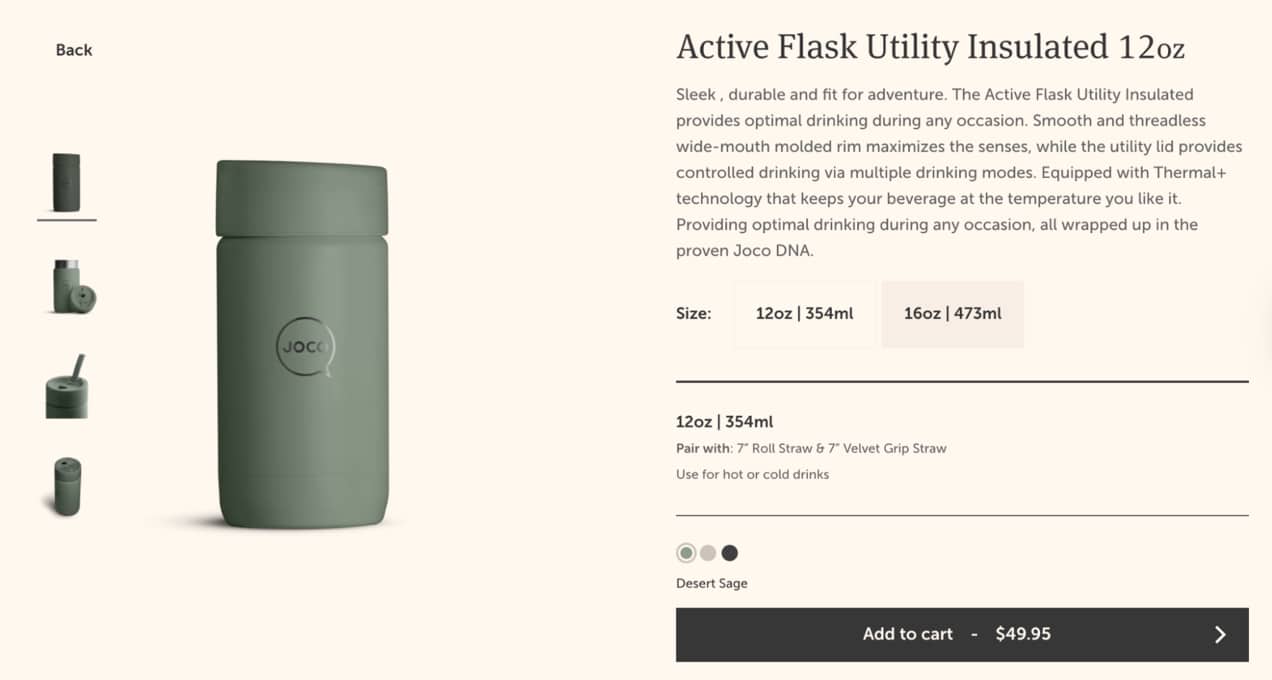
In addition to the SEO value of including your primary keyword in your headline, you will also increase the quality of your page and get more visitors to stay.
8. Put related terms in H2s (secondary headlines)
A good product page should have more copy than you might think.
One of the reasons for this is the SEO value of the keywords you’re using. More content helps search engines determine what a particular page is about.
So hopefully, you have enough content to make some H2s fit in naturally. There are lots of good opportunities to do this. Product details, product reviews, product FAQs — these and other useful types of product page content serve your visitors with valuable information and will increase your conversion rates. And, they make great H2 headings.
Slip some relevant keywords into those headings, and you can check this item off your list.
9. Put the product name in the URL
Just like you want it in your headings, you also want the product name to appear in the URL. URL-text isn’t talked about as much as the on-page content, but that’s literally the “name” of this page. The best URLs are short, because it designates this page as having a clear and undistracted purpose. If your products have different models or varieties, you might even include model numbers in the URL.

10. Add an FAQ if appropriate
An FAQ does more than just serve customers — though that alone is a good reason to add one. But in terms of SEO, an FAQ page also gives you an easy way to add a lot of relevant content that will incorporate organic use of your product’s main keywords.
Come up with questions that are specific to this product or product category, and answer them on the page. You might also include some customer service questions you often get asked.
FAQs work because they address customer objections. You want those to be the questions you put in this section — whatever tends to make people pause in their decision to buy. Answer those in a FAQ and put it right on the product page. It’s SEO gold.
11. Add the product page to its relevant product category
This is a site structure thing, but your products probably all belong to particular categories. When you create a sitemap, this is the sort of thing that will show up in it. All related products belonging to a category will be grouped together.
This is a simple one-time task for each product page, but you don’t want to miss it. Don’t leave product categories unassigned when you add new product pages.

12. Use a product image and include alt text
Web pages with images perform better in search engine rankings compared to pages with no images. And with product pages especially, there’s pretty much no reason not to include a product image. So make sure to have high-quality product photos or graphics for digital products such as software or eBooks.

Then, add alt text to each image. Alt text doesn’t show up on the page unless, for some reason, the image doesn’t load. Alt text has one primary purpose — to describe the image using text if a visitor can’t see it. This might occur when:
- Someone is using a screen reader to consume content, due to a visual disability.
- A browser has trouble rendering the image.
Alt text is critical for the usability of your site, but the SEO benefits are also significant. Now, search engines will know what this image is for.
Keyword usage in the alt text offers yet another way to tell search engines what your page is about. And also, if someone searches in Google Images for that keyword, your image could show up. If you end up using Google Shopping, this will add a bit more to your listings there as well.
If you’re using the Yoast SEO plugin, nailing alt text is one of the steps to getting that coveted green circle. Alt text helps everyone. It helps those who use screen readers, in situations when images don’t load, and your SEO.
13. Write a meta title
The title tag, also referred to as the page title or meta title, is the blue bold text that shows up in search results. That title can, and in most cases should, be distinct from the H1 headline you put on the actual page.

Why? Because they have different purposes.
The purpose of an H1 headline is to get the person who has already reached your page to stay there and engage with your content.
But the purpose of the title tag is to get the person to click through from the search results and visit your website. The meta title is the first thing people see to help them decide if a result is the one they’re searching for.
As you know, when you search for anything online, you get a million results. The meta title and description are most of your advertisement, in this context. This is what you’re using to get people to click through to your website.
So make it count!
Keep in mind, meta titles are limited to around 60 characters. Any more than that will likely get cut off. So you have to be judicious. Yes, you should work to get your target keyword in your title tag. For target keywords that are long tail keywords, this may not be possible depending how long it is.
Also, some longer keyphrases don’t work properly grammatically if you use them word for word. If you have to adjust the keyword to make it work in a sentence, that’s fine.
The most important thing here is to write a 60-character sentence that would make someone who searched for this keyword want to click through to your webpage. Here are a few things to try, bearing in mind you cannot usually use all of these in 60 characters:
- Use an active verb. “Buy, get, see, gain, test, celebrate, discover, etc.”
- Use emotion. Any emotion you fit in that may speak to your target audience
- Highlight a benefit. Sometimes you can do this with just a word or two, other times with the verb or emotion
In addition, for strong meta title SEO, sometimes there are other strategies you can try when your content is a natural fit for them, such as:
- Dates. Current information ranks higher than old information.
- Feature your brand name. This is more important if you think searchers are looking specifically for your company.
- Use a call to action. Sometimes the meta title itself can help make the sale.
14. Write a meta description
60 characters isn’t much. The good news is, below the page title, you also get to write a meta description. This is the black text that appears right below the blue title text. Here, you have about 145 characters to provide more information than what you could fit in the title. And the same recommendations apply here as above. You can include coupon codes, dates, calls to action, emotion, benefits, and all the rest in your meta description.
Like meta titles, the number of characters search engines display for meta descriptions has changed over the years. So be sure to keep the most important information near the beginning.
Also, unlike the title tag, meta description text does not ‘count’ in your SEO rankings. In other words, when Google and Bing look at your web pages, they’re using your content to determine where to rank your page in the search results. They base this on hundreds of factors, including all the things we’re talking about — content, headlines, meta titles, alt text, URLs, etc.
But meta descriptions are not considered. So there’s little value in cramming tons of keyword variations into this spot — though it can be helpful to encourage clicks in some cases. Your best use of meta descriptions is to give valuable information to the person who searched for this term.
Again, along with the meta title, this is your billboard in the endless trail of search results. This is your one chance to stand out and win the click.

Advanced SEO tasks
Once you have a handle on the fundamentals of SEO, you’ll be well on your way. Though it can seem intimidating from the outside, the majority of SEO is fairly straightforward.
If you’re regularly producing and posting high-quality content, SEO-optimized content, that’s a big win. You should celebrate your progress if you’ve checked off most of the items up to this point.
Next, you can begin to tackle some more advanced tasks that can elevate your SEO from good to outstanding. Some of these items would go on a technical SEO checklist.
However you want to organize it, if you want to see your website traffic soar or if you’re dealing with a very competitive set of keyword terms, start devoting attention to the next set of tasks on our SEO checklist.
15. Add schema markup for each page
Are you annoyed that you have to rely entirely on the meta tags to win over clicks from searchers?
With schema markup, you can enhance the appeal of your search engine results with information beyond the meta title and meta description. You can add information like star reviews, shipping information, product details, and more.

You might use some of the same schema markup on all or most of your pages. Whether you do that or take a different approach, using this increases the likelihood of click-throughs, and also gives your website a professional, trustworthy, and reputable impression.

Google likes to recommend websites with these qualities, because they care about the user experience of the people using their platform. So, schema markup can help elevate your website in search results.
16. Use anchor text for internal links
Anchor text refers to any text you use to link to another page. And while you can use any text you want to link to other pages, you’ll do better with SEO if you put more thought into the words you use for anchor text — especially for internal links.
The best SEO strategy for internal linking is to use keywords that relate to the content you’re linking to in the anchor text. That serves as another signal to search engines that the page you’re linking to is about that keyword.
This is actually harder to do than you might think, and part of the reason is because of how we’ve been trained to interact with websites.
Suppose you want an internal link to a page that lists the top hair salons in your city, and you write this sentence:
“Click here to see the top-ranking hair salons in [city name].”
With that sentence, which text do you use to create the actual internal link? You have several options:
- Click here
- Click here to see
- See the top-ranking hair salons
- Top-ranking hair salons in [city name]
- The entire sentence
In terms of anchor text, the best choice is number 4 because it uses the keyword “top-ranking hair salons,” plus the city name.
The problem is, the sentence tells the reader to click here. So, we expect those two words to be part of the link. If you want to use the keyword in the anchor text, that forces you to basically link the entire sentence. And you can do that, but it’s not ideal.
A better approach is to begin learning how to phrase things differently so the anchor text serves as the most natural link language that includes the keyword. You could rewrite the above line like this:
“See the top-ranking hair salons in [city name].”
Now, you can link the whole sentence, and you’ve removed the unnecessary words. But you can do even better than that. You can also try to fit the keyword into the natural flow of an existing sentence, rather than something that feels more like a call to action. An example might be something like this:
“Our customers often ask about hair salons and if we have any relationship with local stylists. We do, and we love telling our customers about the top-ranking hair salons in [city name].”
See how that works? In that example, you can highlight just the keyword, and also the city because of the local SEO value, and it’s right in the middle of the sentence with no CTA required.
Start thinking about using this type of language when creating internal links, and it will boost the authority of the pages you link to. And you can do even better by having all the pages linking to one particular page use a different variation of the same keyword. With this salon example, other internal linking to the page with the ranked list could use phrases such as:
- Best hair salons
- Top hair salons
- Top [city name] hair salons
- [city name]’s best hair salons
- Favorite hair salons in [city name]
There are many more, but hopefully the point is clear — use different anchor text on each page that links to the page you want to rank for these terms.
17. Eliminate duplicate content
Duplicate content can hurt your website because it tells search engines they can’t fully trust that you’re creating unique and original content on all your pages. It may also indicate a lack of overall professionalism in site management.
Duplicate content has an air of keyword stuffing, a discredited keyword strategy disreputable websites use to try to game the system and get tons of traffic without earning it. It also suggests possible plagiarism. Google has cracked down on those sorts of practices and even the most reputable sites can sometimes lose ranking as a result of duplicate content.
The problem for some legitimate websites is that you may inadvertently have created duplicate content without knowing it.
A common place this shows up, especially on ecommerce sites, is in product pages for products within the same category. If you sell yogurt, you could have a different product page for each flavor. That’s a great idea. But you may find yourself using a lot of the same language on these pages.
You can have the same problem with different clothing sizes, colors, and other small variations. You can’t create content that’s completely different for situations like these, but you still want the separate pages.
The way around this is to use something called canonical tags. This approach tells search engines which page to send the traffic to when people search for the primary target keyword. Then, the search engine knows all the similar pages are just branches from the main one, so to speak. This ecommerce SEO guide has more to say about canonical tags and duplicate content. (By the way, there’s an anchor text example).
But what about duplicating content from other sites?
If you sell products made by other companies, don’t use their product descriptions on your pages. Write your own. Don’t copy and paste large sections of content from other sites, and if you do want to quote another website, attribute it by linking to the source. External links are one ranking factor in SEO, so you should link to other pages now and then anyways.
18. Eliminate or disavow ‘toxic links’
This one is really advanced, only for those who want to get into what we could call the “SEO weeds.”
The topic here is backlinks. A backlink happens when another site links to yours. In general, backlinks are good. They’re a vote of confidence from other sites and thus build up site authority and are part of how Google ranks websites. But some backlinks are not so good. They can be toxic, spammy, or manipulative.
While some toxic links won’t cause any harm to your search engine rankings, others can. It depends in part on why the link was created in the first place. If you want to separate your website from unwanted links, you can disavow the link. ‘Disavow’ is a tool available from Google, and it essentially severs the connection from the disfavored link to your site.
If you want to get into all these details, you can learn more about disavowing toxic links.
19. Build authoritative pages
Authoritative sites have authoritative pages. For most websites, you have certain topics that you might call your “core” topics and keywords. These terms should rightly be perceived as your expertise. They tend to be broader terms, not long tail keywords.
For example, a site that sells courses on videography should have a page about video editing. ‘Video editing’ would be a target keyword for which they could build an authoritative page.
You want to create authoritative pages around these sorts of terms. Authoritative pages typically have several characteristics, including:
- High word count — think several thousand words
- A broad discussion of a big topic
- Brief discussions of many related subtopics
- Lots of links to subpages with more details
- Images, graphics, screenshots, and other multimedia
- Short URLs
- Short H1s
Depending on your website’s purpose, you could have anywhere from just a few authoritative pages to several dozen or maybe even more. But it takes time to create just one of these. And to make them fully effective, you can’t just stop with this page. You must also create all the subpages the authoritative page will link to.
This SEO strategy is known by various names, such as “hub and spoke” and “pillar pages.” The idea is the same. You build out the main central page, and then all the subpages. The key is, you link both ways. The authoritative page links to all the subpages, and those pages all link back to the main page.
20. Create subpages that link to the authoritative ones
If you’re going to use authoritative pages, you really need to do it one topic at a time, because you’ll want to create some of the sub-pages around the same time. In fact, it might be best to create a few subpages first so that when you publish the authoritative page, you already have a few pages to associate it with.
You can always add more sub-pages related to the main topic later, and link them to the pillar page. And whenever you do this, you’ll want to add some content to the authoritative page as well, so that page can link back to the new one you just added.
You can really start to “own” some higher-volume keywords when you commit to this SEO strategy and implement it effectively.
And the good news is, any industry, and any business can do this.
Suppose you own a pool cleaning business. That’s a pretty localized niche. But a pool cleaning business could write an authoritative page about pool cleaning tips. Then, they could create sub-pages about pool cleaning chemicals, environmentally-friendly pool cleaning materials, the tools of pool cleaning, how often to clean your pool, pool water testing, and probably ten other topics all centered around the one major keyword.

For a business like that, they probably won’t need more than a handful of authoritative pages, because it’s a narrowly-focused business. But you really want to own the space of a few keywords that relate to your expertise. With this approach, any business can do it.
21. Optimize your site speed
A slow site will not rank as high as a faster site, all other things being equal. This is because slower websites have a lower-quality user experience. Is your site slow? How would you know?
The way to find out is to use one of the various free online tools that test your site’s speed. Page Speed Insights is a great one to use. Just type your domain name into the bar and it will analyze your website. Then, it will report on your site’s speed and list out recommendations for what you can do to accelerate it.
Some of the most common factors that slow down sites relate to images. Too many images, or images that are too large can greatly slow down a page. There are relatively simple ways to fix problems like these, and Page Speed Insights gives pretty thorough and detailed explanations of what you can do.
Other problems can take more effort and expertise to address. But now, you’ll have a list of tasks you can go through or have a developer work on.
22. Optimize the user experience with Core Web Vitals
Core Web Vitals refers to a system of measurements developed by Google to assess the user experience of a website. It focuses on three aspects — site speed, the ability to interact with the page, and the visual stability of the page.
You can see how you’re doing on your Core Web Vitals in Google Search Console, under the “experience” section.
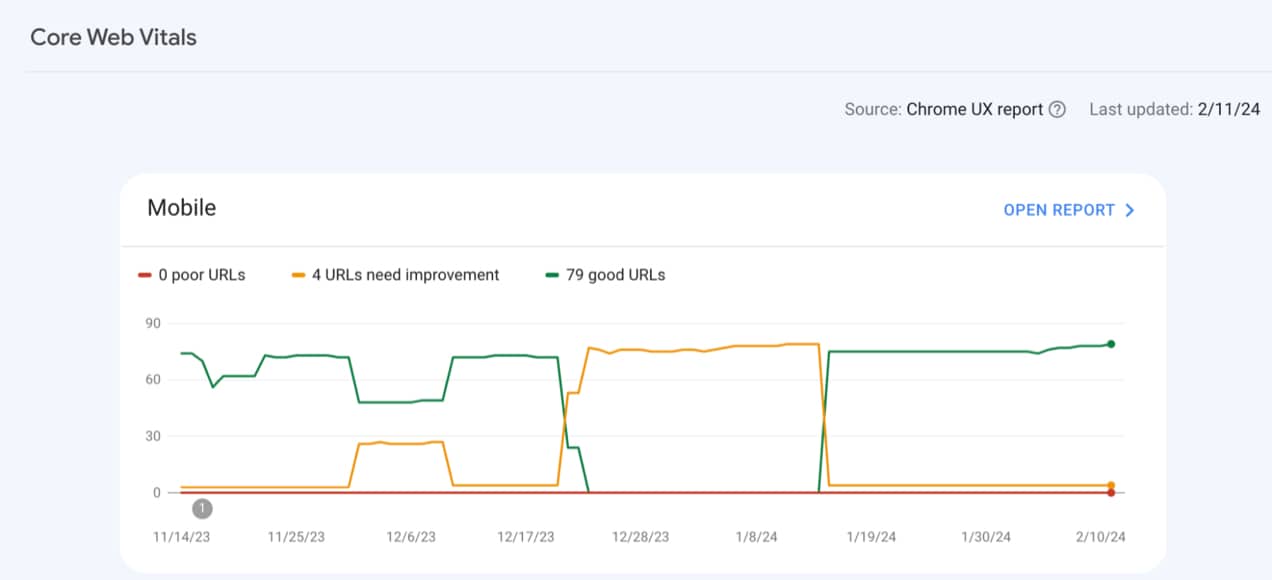
We discussed site speed earlier, but the complexity of the issue arises from the fact that every page can have a different speed. When you type a domain into Page Speed Insights, it only measures the URL you enter. But every other page on your site could have different results, in theory. Core Web Vitals assesses your site more holistically, and for more issues than just site speed.
But like with page speed, you can get a list of steps to take to address any deficiencies in the three areas, and you’ll find that in Search Console.
The fastest way to improve Google Core Web Vitals is to use the Jetpack Boost plugin. With just a few toggles, you can quickly generate critical CSS, defer JavaScript, optimize images, and more.
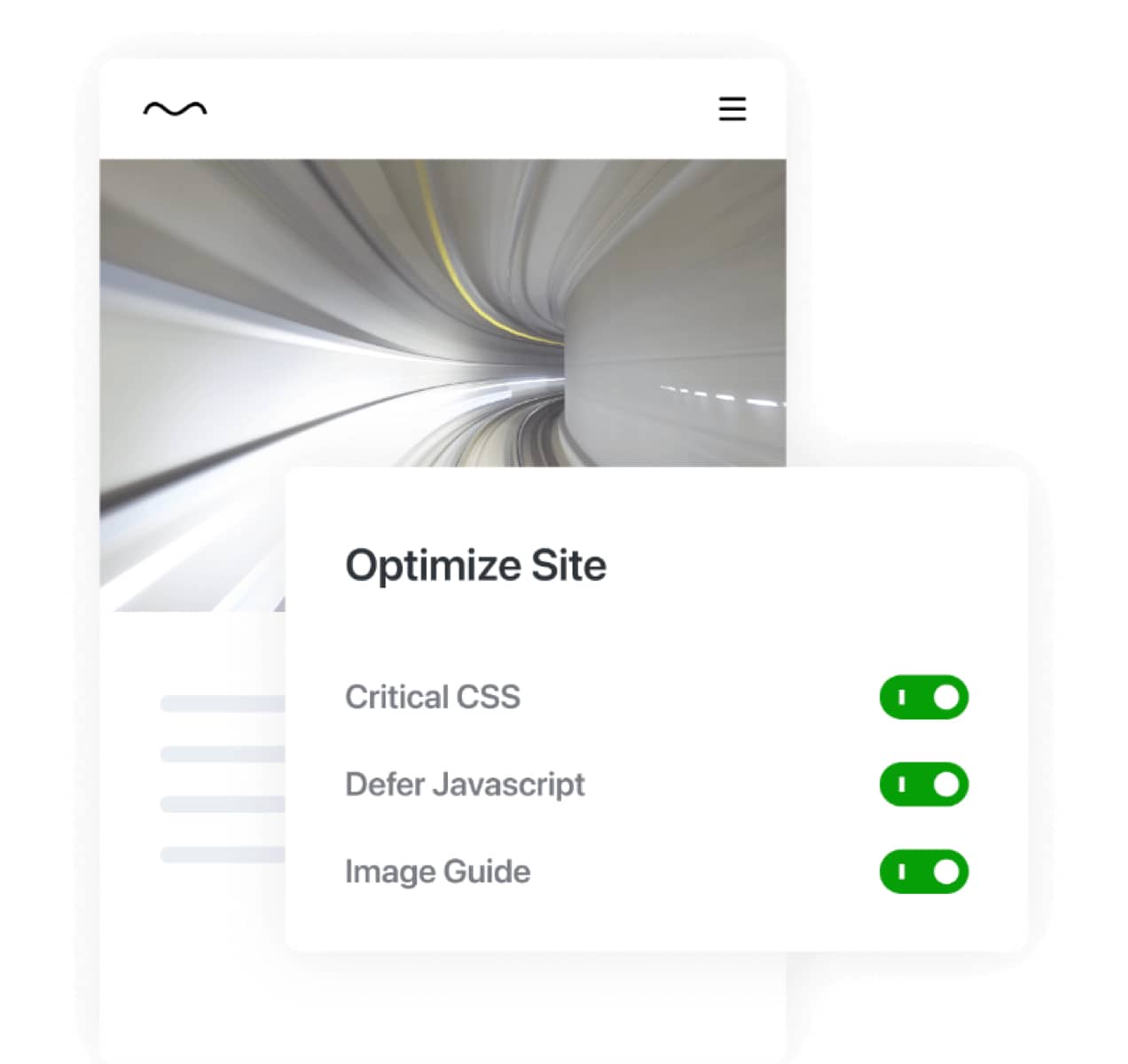
Want to dive in further? Learn more about Core Web Vitals.
23. Fix broken links
Yet another way to use Google Search Console and Bing Webmaster Tools is finding broken links. A broken link can happen for all sorts of reasons.
You might decide to change the URL of a page to better focus on the target keyword. Maybe you no longer offer a certain service or product. There are a variety of valid reasons to change a URL. The problem is, if there are any links to that page, they’ll now all be broken.
Whatever the cause, broken links will happen, and when they do, any person trying to find that page gets the dreaded 404 error message.
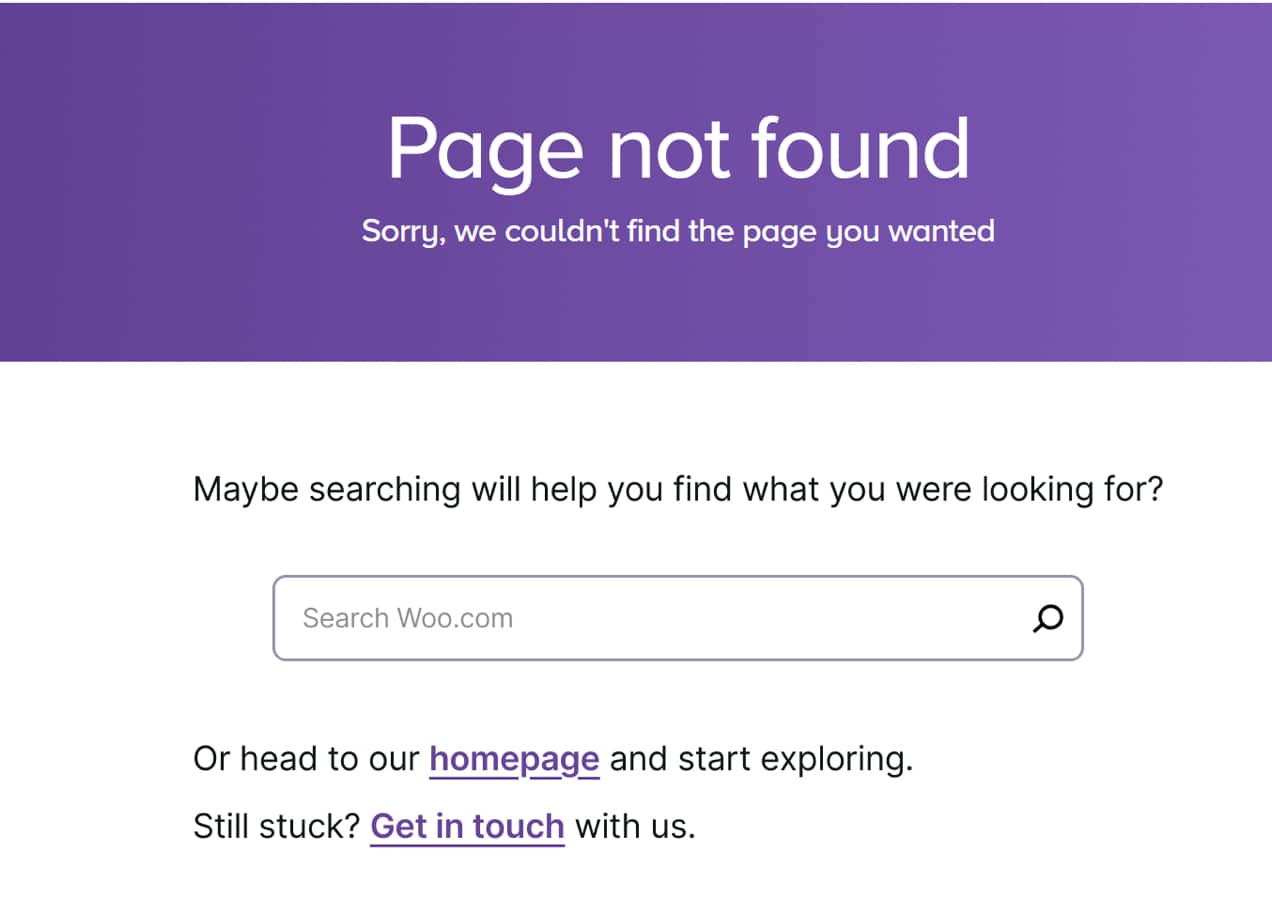
Search Console will help you find broken links, and then you can take the necessary steps to resolve them.
The most practical solution is to create a 301 redirect to a page that is still live. This will fix all instances of the original broken link.
Alternatively, you could remove the link altogether or link to a different page instead. These work just as well, but only solve one instance at a time.
24. Turn external brand mentions into backlinks
Hopefully, other websites will begin to mention your brand on their sites. A mention is great, but it would be even better if they also linked to your site, right?
By using a tool like Screaming Frog, you can actually find instances where your brand is getting mentioned on other pages, and then reach out to turn those mentions into links. This is probably the easiest way to get backlinks if this is happening for your brand.
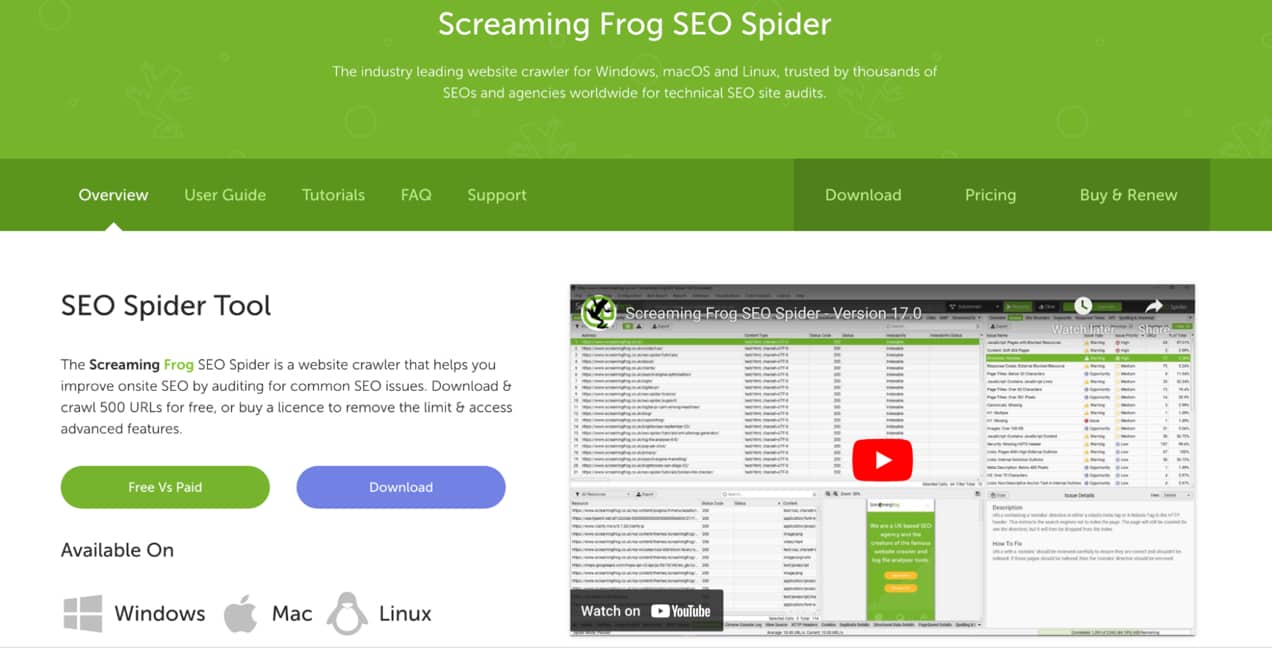
25. Write guest posts
Speaking of backlinks, they are valuable, and one of the more well-established ways of link building is through guest posting. Look for other websites that aren’t competitors but operate in parallel or supportive industries.
Identify a topic within your realm of expertise and that their audience will appreciate, and offer to write a free blog post about it in exchange for a link to your own website.
Most website owners want more content because they know it’s important, so it shouldn’t be hard to find one that will say yes. A good way to assess potential link building opportunities is to look at what the other sites have already posted.
A website with zero blog posts and just the barebones basic pages is actually less likely to accept your guest post offer. They either aren’t maintaining their site, or they don’t understand the value of content. Look for sites with at least decent amounts of content — enough to know that they’re making an effort.
This process takes time, but in addition to the backlink, it may also lead to more business through referrals, depending on who you’ve written the guest post for.
Local SEO tasks
For businesses with a local presence where your location matters to the people searching for you, there are additional items to add to your SEO checklist. And in fact, you should prioritize these ahead of most of the others that came before this.
26. Get on Google Business
Having a Google Business page lets people see much more information about your business than will ever show up in typical Google search results.
With this, you can publish your hours, list basic contact information, show reviews and photos, and much more, all within the search engine results pages. For local businesses, this is how many web searchers find the places they will visit. Here’s the Google Business setup page.
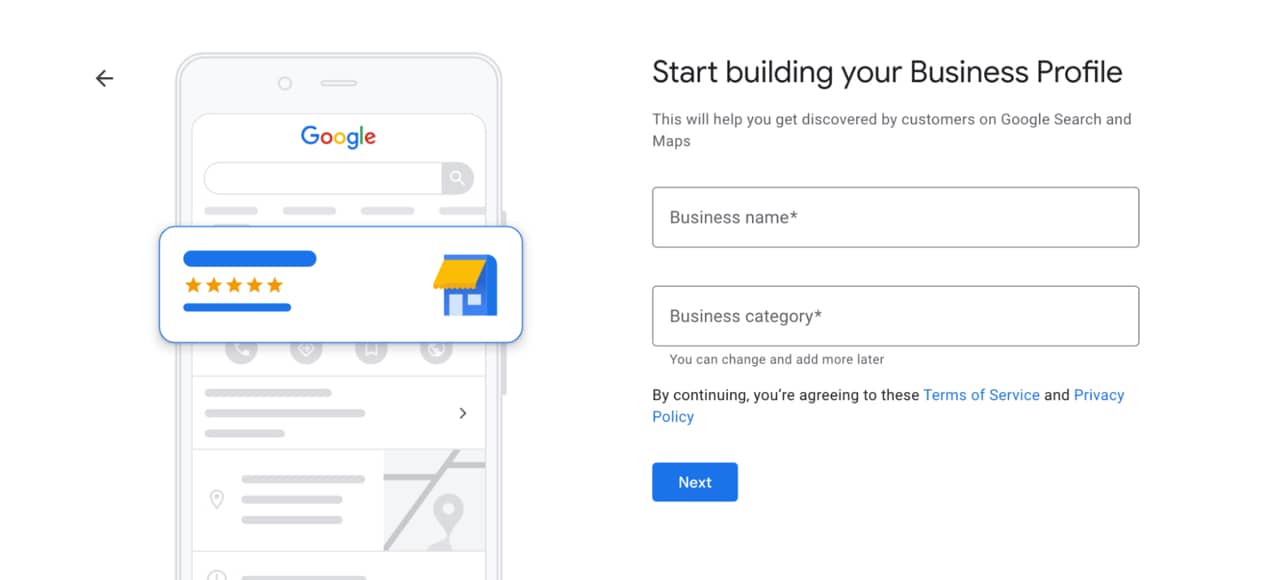
And one of the great things about Google’s suite of tools is that you can use a single account to manage everything from Google Business to Google Analytics and Google Search Console.
27. Get listed in directories
This is another source for backlinks. There are certain authoritative directories whose endorsement of your business via a listing can provide some healthy SEO value. Google Business is one such directory.
You can also use Yelp and the Yellow Pages, as well as LinkedIn and other social media sites. And for local businesses in particular industries, you can probably find other publications that are specific to your niche that have directories of businesses. These will actually be the most valuable to you in terms of potential customers finding your business.
Also, make sure your contact information on all the directories is consistent, and that it also aligns with whatever you have on your contact page. This is a kind of arduous process, so it might be worth using something like Moz that has an automated directory listing tool.
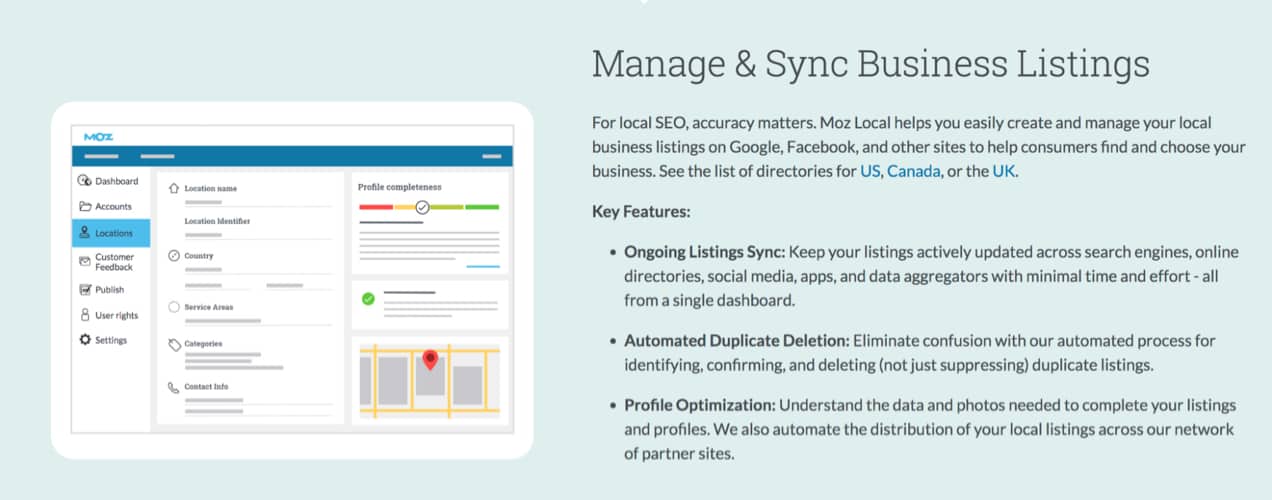
28. Emphasize each of your locations
Whether you have one physical location or several, you should create different pages for each. If these are in different cities, make sure to use the name of the city several times on the pages for each city. If all are in the same city but at different locations, use things like zip codes, street names, neighborhood names, or other commonly-known words local people will use when they think about looking for something in that area.
And as you learned earlier in this article, make sure the name of the city or location is listed in the H1. You want that page to show up anytime someone searches for the target keyword and that city or location.
Want to learn more? Read our ultimate guide to local SEO.
SEO tools
Let’s take a moment here to pause and note some helpful SEO tools. We’ve mentioned a few already, but let’s get them all in one place. If you’re going to get serious about your SEO, some of these tools will be helpful at different points in the journey.
We just mentioned Screaming Frog, which is a free tool that does a lot more than find external sites that mention your brand. You can also use it to identify crawl errors, broken links, duplicate content, and some of the other issues you’ve read about. You can also use it to create sitemaps, and many other tasks.
Other tools mentioned already that we’ll list here again:
- Keyword.io. Use this free tool to generate additional keyword ideas.
- Surfer’s Chrome extension. See keyword volumes for your terms and related ones with this free tool.
- Moz. This is one of the top platforms for keyword research, tracking, competitor comparisons, directory listings, and more.
- Ahrefs. This is a similar tool to Moz that provides information for completing an enhanced on-page SEO checklist, off-page SEO, and technical SEO.
- SEMrush. This is a great tool for keyword tracking and analysis.
It’s time to get started
This is a big checklist, but remember, your SEO efforts will constitute an ongoing process. You’re never “done” with SEO. It’s part of ongoing digital marketing.
But there are certain SEO tasks you only have to do once, or monitor them now and then. With tools like Google Search Console and the others given here, you’ll be able to stay current about your website’s traffic, target keywords, and other information so you can continue optimizing your SEO and competing for traffic that’s relevant to your website’s purposes and goals.
It’s time to create a content calendar. Put SEO on your monthly schedule. Plan out the tasks you want to tackle and start attracting more online traffic. You’ve got this!
